Logo Design Basics for Small Businesses: A Beginner's Guide
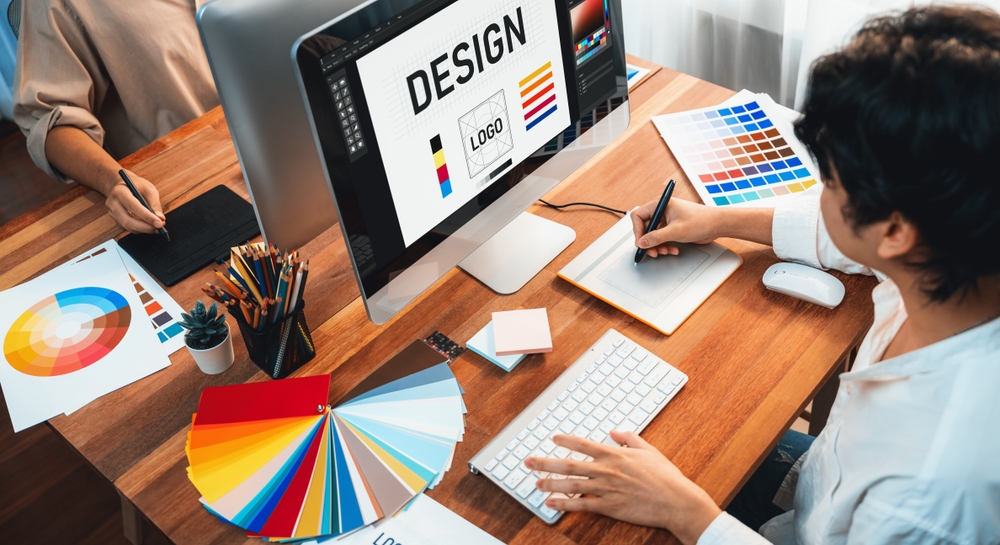
Posted by Naji Jr. on to Technical Guides
Logo Design Basics for Small Businesses: A Beginner's Guide
Creating a logo for your small business is a pivotal step in establishing your brand's identity. A well-crafted logo communicates to your customers who you are, what you do, and how you do it—all at a glance. In this guide, we'll walk you through the basics of creating a logo that not only resonates with your brand ethos but also stands the test of time and digital trends.
Understanding the Importance of Your Logo
Your logo is often the first point of contact between your business and potential customers. It's not just an image; it’s a point of recognition and a visual cornerstone of your brand's identity. A memorable logo can enhance customer loyalty and establish brand identity, setting you apart in a crowded marketplace.
Take, for example, our company, LogoUp. Our logo effectively encapsulates our brand's mission and services. The name itself is a clear indicator of our expertise in logo apparel, reinforcing the idea that we help elevate your brand's presence. The logo is designed to be versatile and scalable, maintaining its integrity across various mediums, from embroidered shirts to digital screens. This adaptability and clarity embody our understanding of a logo's role in business—acting as a silent ambassador for your brand. By aligning our visual identity with our brand name and services, we demonstrate how a well-considered logo can be an asset to any business, including ours.
1. Defining Your Brand for Logo Design
Understanding your brand is the first step in logo creation. It's not just about what you sell, but the values and mission that define your business. The logo should encapsulate this and resonate with your audience.
Key steps include:
Brand Discovery: Determine your brand's personality. Whether it’s formal, casual, innovative, or traditional, this shapes your logo's tone.
Mission Statement: Define your business goals. A clear mission can inspire your logo's design, tying it closely to your business's aims.
Unique Selling Points: Know what makes your brand unique. These qualities should be evident in your logo to set you apart from the competition.
Target Audience: Understand who you're targeting. Your logo should appeal to their preferences and behaviors, ensuring it resonates with the intended demographic.
Visual Brainstorming: Gather visual ideas that reflect your brand. Mood boards are excellent for this, helping to visualize the look and feel of your brand’s potential logo.
2. Embracing Simplicity in Logo Design
A logo should be simple enough to be instantly recognized and versatile across various applications:
Recognition: A simple logo is immediately identifiable, which is essential in today’s fast-paced environment.
Versatility: Your logo should be clear and coherent, whether on a smartphone or a billboard.
Memorability: Simple, bold logos are more easily remembered, aiding brand loyalty.
Timelessness: A straightforward design can outlast trends, keeping your logo relevant long-term.
Scalability: Ensure your logo is adaptable to various sizes, maintaining clarity.
Focus on stripping your logo to its basics while ensuring it tells your brand's story. The goal is a simple yet potent symbol that effectively represents your brand.
3. Selecting the Perfect Typeface for Your Logo
Typography in your logo is a powerful tool to convey your brand's character. Here's how to pick the right typeface:
Typeface Personalities: Choose a serif font for a traditional feel, suitable for businesses like law firms, or a sans-serif for a modern look, ideal for tech startups or fashion labels.
Readability: Ensure your typeface is legible across all platforms and sizes, particularly on small screens.
Unique Typography: Custom typefaces can provide a distinctive identity, setting your brand apart in the market.
Brand Consistency: Your logo's typeface should align with other fonts used in your branding for a cohesive look across all media.
4. Color Psychology in Logo Design
Color choice is crucial in logo design as it communicates your brand's identity and influences customer emotions. Consider the following when selecting your palette:
Emotional Impact: Select colors that evoke the desired emotions. Blue denotes trust, red signals energy, green symbolizes growth, and yellow suggests optimism.
Brand Recognition: A distinctive color palette can significantly enhance brand recall. Choose shades that differentiate you from competitors.
Cultural Sensitivity: Colors carry cultural significance. Research your audience's cultural associations with colors to ensure positive reception.
Medium Testing: Verify that your colors maintain their integrity across various platforms to ensure a consistent brand message.
5. Choosing Imagery and Icons for Your Logo
The right imagery can make your logo unforgettable and convey your brand’s essence effectively:
Relevant Symbolism: Select icons that reflect your business's nature or abstractly denote your brand values.
Innovative Design: Avoid generic images. Aim for originality to stand out and ensure easy brand recognition.
Design Simplicity: Opt for straightforward imagery that retains clarity when scaled.
Brand Harmony: Ensure icons complement your brand name and tagline to present a unified brand identity.
6. Making Your Logo Memorable
Crafting a memorable logo involves integrating unique features that capture attention:
Distinctive Elements: Introduce subtle, clever elements in your design that make your logo stand out and stick in the memory, such as hidden symbols or the creative use of space.
Brand Consistency: Ensure your logo is used uniformly across all marketing channels to reinforce brand recognition.
Emotional Appeal: Design your logo to resonate emotionally with your target audience, enhancing its memorability.
7. Ensuring Logo Versatility
A versatile logo performs well across various applications:
Responsive Design: Ensure your logo retains clarity and impact on devices of all sizes.
Grayscale Readability: Your logo should be identifiable in black and white, which is essential for certain print materials and cost-effective advertising.
Adaptability Across Contexts: Test your logo in different settings to confirm its legibility and impact, whether it's a social media avatar or a physical product.
8. Testing Your Logo: Validation Before Launch
Testing your logo's effectiveness is a step you cannot afford to skip. Here’s how you can ensure your logo stands up to scrutiny:
Mockups: Place your logo in various mockups to see how it looks in real-life situations. A logo might look great on paper but not on a storefront.
Feedback: Gather opinions from a diverse group that represents your target audience. Constructive criticism can be invaluable in refining your design.
Grayscale and Reversals: Check how your logo fares in grayscale and in negative (light logo on dark background). This will show you its potential across different applications.
9. Legal Considerations: Safeguarding Your Logo
When finalizing your logo, it’s imperative to consider the legal aspects to ensure that your design is uniquely yours and protected from any infringement issues. Here’s what you need to know:
Trademark Search: Before settling on a logo, conduct a comprehensive search to ensure it doesn’t infringe on existing trademarks. Online databases like the United States Patent and Trademark Office (USPTO) can be a starting point for U.S. businesses. This step is crucial to avoid legal conflicts and rebranding costs.
Trademark Registration: Once you’ve ensured your logo is original, consider registering it as a trademark. This provides legal protection, giving you exclusive rights to use the logo in your market sector within the jurisdiction. The process can be intricate and may require the assistance of a legal professional.
International Considerations: If you plan to do business internationally, check the trademark laws in those countries as well, as trademark rights are typically territorial.
10. Professional Help: The Expert Touch in Logo Design
While the do-it-yourself approach may seem cost-effective, hiring a professional designer or agency can be a wise investment for several reasons:
Expertise and Experience: Professional designers bring a wealth of experience. They can offer insights into design trends, color psychology, and typography that you might not have considered.
Customization: A professional can tailor your logo design to your brand’s exact needs and provide a unique design that stands out in the market.
Time Efficiency: A professional can streamline the design process, allowing you to focus on other aspects of your business while they handle the complexities of logo creation.
Legal Assurance: Design professionals are often familiar with copyright and trademark issues, reducing the risk of legal complications down the line.
Conclusion
Your logo is a fundamental part of your business's brand identity. It should encapsulate your brand, be easy to recall, and make a strong impression on your audience. While the process of creating a logo can seem daunting, keeping these basics in mind will help you design a logo that stands out in the marketplace and grows with your business.
By following this guide, you'll have a solid foundation to start crafting a logo that's not only visually appealing but also a strategic asset for your brand. Remember, your logo is a long-term investment and getting it right from the start can make all the difference in your brand's journey to success.
Categories
Recent Posts
- The Best Custom Polos for Workwear and Events
- The Most Popular Custom Hats for Every Occasion
- Why Choose a Mesh Back Hat?
- Exploring Backstrap Options: The Benefits and Drawbacks of Popular Hat Closures
- The Perfect Pair: Branded Bills Hats for Embroidery
- Trendy Camo Hats for the Outdoors: Customize the Richardson 111P with LogoUp
- The Ultimate Guide to Customizing the Richardson 320 Washed Chino Hat with Embroidery
- Embroidery on the Otto Cap 39-165: High-Performance Customization for Every Occasion
- LogoUp Holiday Gifts: Embroidered and DTF-Decorated Richardson 112, 112PFP, and 112PM
- Gifting LogoUp Custom Campfire Mugs: Thoughtful, Versatile, and Personalized















































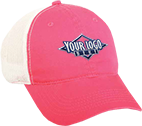





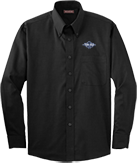












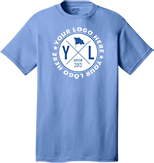




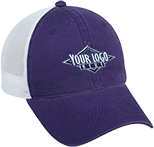







Add Comment